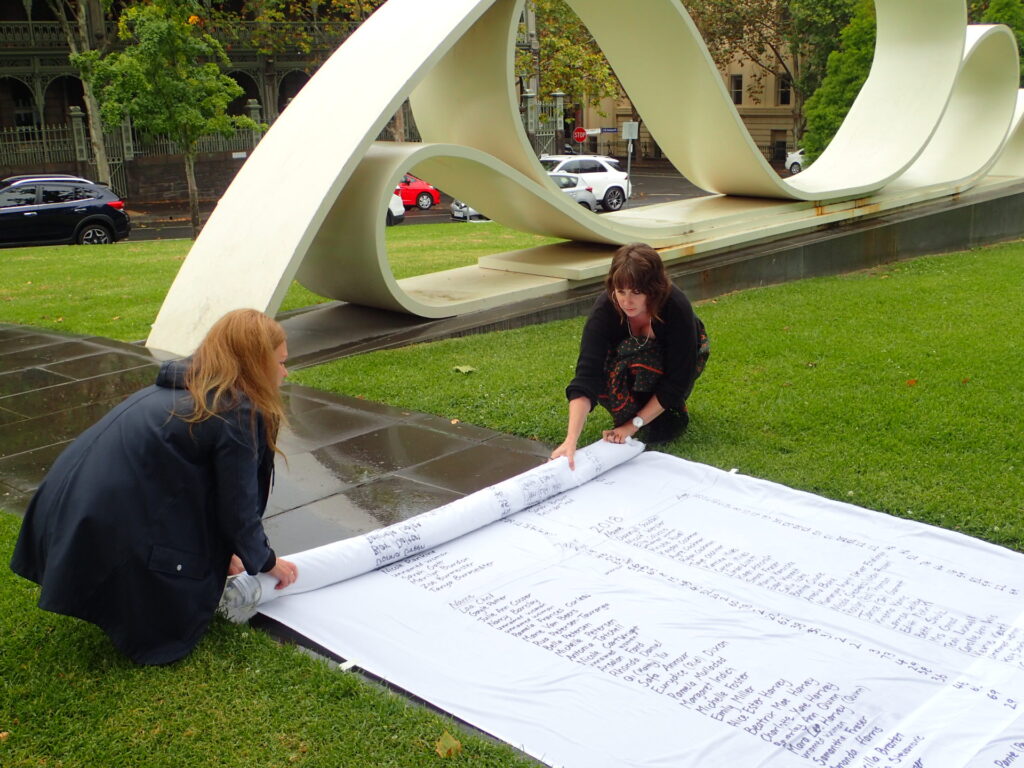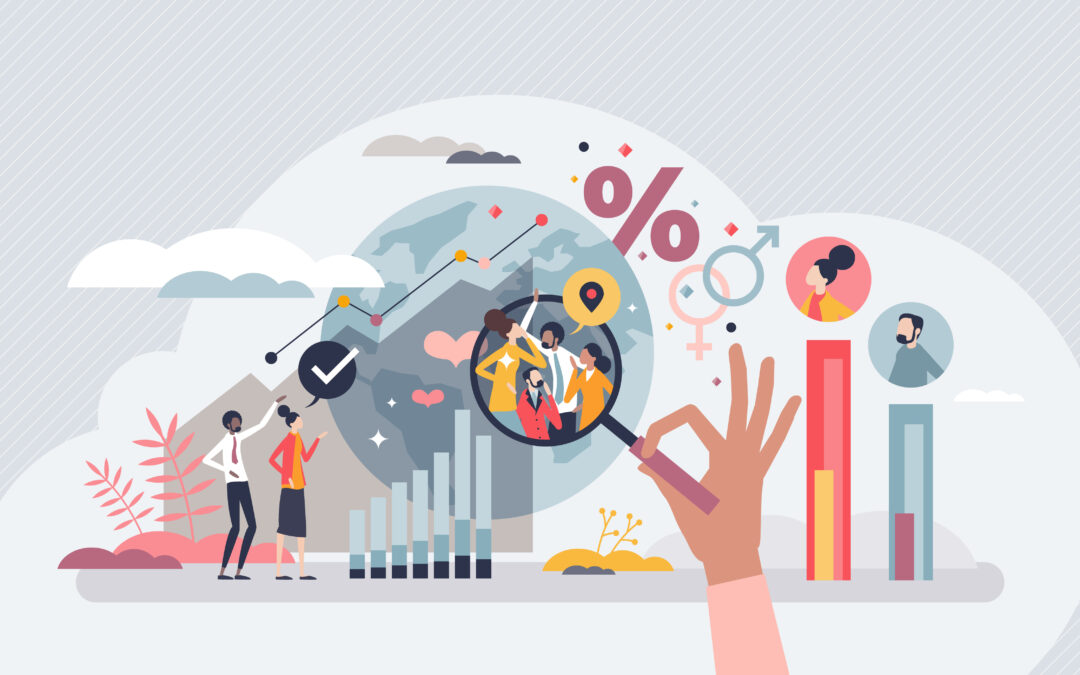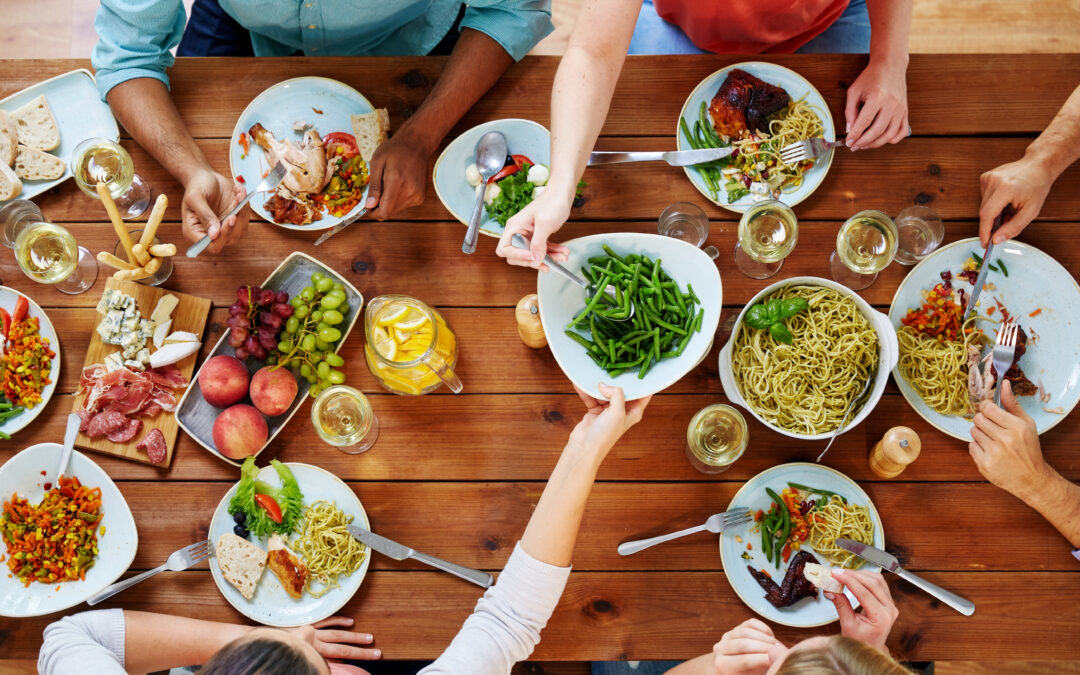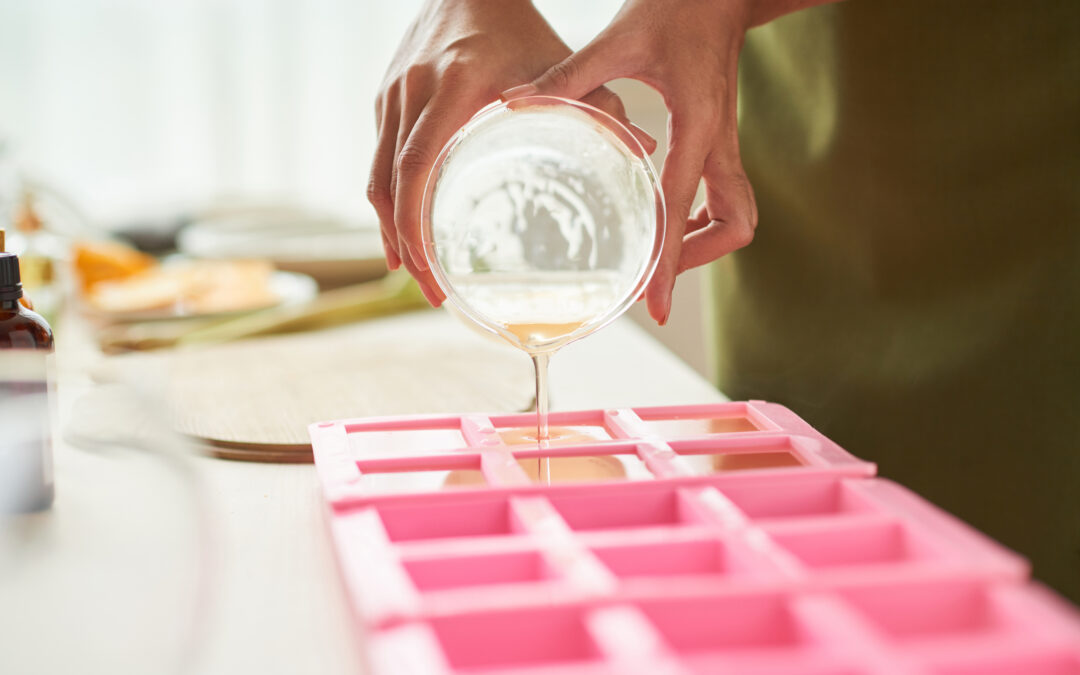In a couple of lines, tell us about yourself.
I am Dans Bain, a Narrm/Melbourne based artist. I work across multiple intersecting mediums with a strong focus on social justice, inclusion and personal narratives.
It is important to me that my arts practice is collaborative, as I believe that this brings depth and texture to the stories that emerge, and makes the work interactive and accessible for a wide range of audiences.
I am an artist, but I am also a mum of two young kids, a boy and a girl. For the past five years I’ve mostly taken a break from my arts practice to raise my kids. I’m an introvert and I like to think that my work speaks for me, so stepping into this public arena and having to speak alongside my work is a new experience.
My recent work is very much informed by motherhood. I look at my kids and I foresee two very different life experiences ahead of them. I see my daughter facing gender inequality, attracting unwanted sexual advances and fearing for her safety around men and boys.
I also see my son, and when he’s grown up I want him to call out misogyny and use his privilege to allow equal opportunity to others. I want him to understand the crisis that is happening in our communities, in our homes and on our streets.
You’re taking on the issue of gendered and family violence. Why? Does this have a personal resonance for you?
When I think back to my first recollection of gendered violence, I think of 1997. I was a typical 16-year-old. One night on the news they announced that a woman’s semi-naked body had been found face down by bushwalkers in the bushland not far from where I lived.
Her name was Kristy Harty. She was 18 years old, just two years older than me. What was ingrained to me at the time initially was the tragedy, the loss of a young life. However discussion and reporting quickly turned to victim blaming, and so I found myself asking…
- What about the man who raped and murdered her?
- What about the institutions who failed Kristy?
- Why are we still seeing victim blaming headlines?
- What kind of message are we sending to the next generation?
- Why can’t any government seem to effectively deal with allegations of misconduct or protect those who work within their offices?
Over the years I’ve become so weary. Weary of always being hyper-vigilant of my personal safety as a woman in public space and weary with concern for my female friends and family.
I’m sick of the cat-calling, arse-grabbing men who always get away with it and the people who look the other way. All of these smaller indiscretions perpetuate a rape culture environment that can escalate to women and children being murdered.
I have friends and family who have been abused or assaulted and none of the perpetrators have seen justice. All of the women I know who have experienced gendered violence have not reported it.
I despair at the rate at which women and children are being lost to or living with violence in our communities.

Laying out the Lost Petition. Picture: Mickey Russo.
What is the Lost Petition?
The Lost Petition is a 30-metre long fabric artwork currently containing the names of 986 women and children who have lost their lives to male violence, from 2008 until present day. These women and children can no longer vote, they have unjustly lost their right for representation and to have their voices heard by our Government.
The Lost Petition is a platform for the people most affected by domestic abuse, family violence and gendered violence to be heard. It is based on the research of award-winning journalist and anti-violence advocate Sherele Moody of The RED HEART Campaign and the Australian Femicide and Child Death Map.
I want people to see the scale of this crisis. I want them to read the names of those women and children who are no longer with us today. I want them to grapple with the reality that we must act – to ensure that this petition doesn’t get any longer. The Lost Petition signs for the dead.
Our names are who we are. Why have you decided to make your artwork with text like this?
The Lost Petition is created with the handwritten word. This work echoes the 30,000 signatures from The Women’s Suffrage Petition in 1891, demonstrating public support for women’s right to vote. I’d also like to acknowledge that universal suffrage was not granted to Indigenous women and men until 1965.
The Lost Petition also pays homage to The Great Petition by Susan Hewitt and Penelope Lee. The Lost Petition had its first exhibition, intersecting The Great Petition sculpture at Burston Reserve, Melbourne on International Women’s Day 2021.
The first thing that a viewer will notice is the handwritten element. The imperfections of the text reflect the individual women and children listed.
Our names are our identity, and they help us connect with each other.
The act of writing on a large-scale petition signifies its origins in grassroots activism.
You’re taking this work to Federal Parliament today. Why?
I am taking The Lost Petition to Parliament House the day before Budget Day because I want to see an adequate response to the issue of gendered violence in Australia not only reflected in this budget, but for all parties to signal their commitment and responsive policies to this issue in the upcoming election.
There are so many incredible organisations working in this field who have already done the work of developing detailed policy alternatives for governments – I’d advise any Member of Parliament to seek those out. The work has been done for them – they just need the political will to act.
If you had a magic wand and could fix the issue, what would that look like?
All kinds of women are affected by gendered violence. It does not discriminate between postcodes.
We must ensure marginalised members of our communities have their voices heard. To achieve positive outcomes, policies must recognise the experiences of survivors, families who have lost someone to violence, women with disabilities, elderly women, women of colour, multicultural women, First Nations women, sex workers and people from the LGBTIQ community.
Women in all their diversity should be included in all considerations of policy, services, practice and legal rights.
Is there anything else you want to say
When I get asked, “what about men?” it’s important that we look at the facts. Statistically, men are more likely to commit violence against women and children. In Australia, on average, one woman a week is murdered by her current or former partner. These are the cold, hard facts – which is why men and boys need to be held accountable.
Equality cannot exist without respect, and respect needs to be ingrained in the minds of the young. Respecting people regardless of gender should be at the cornerstone of how we engage with our community.
We need to ensure that prevention services are at the forefront when tackling the issue of domestic abuse – not just protective services and after-trauma support.
- Melbourne-based artist Dans Bain, with her 30-metre-long fabric artwork, listing all of the names of women and children who have lost their lives to gendered violence since 2008. Picture: Mickey Russo
Ginger Gorman is a fearless and multi award-winning social justice journalist and feminist. Ginger’s bestselling book, Troll Hunting, came out in 2019. Since then, she’s been in demand both nationally and globally as an expert on cyberhate and the real-life harm predator trolling can do. She's also the editor of BroadAgenda and gender editor at HerCanberra. Ginger hosts the popular "Seriously Social" podcast for the Academy of the Social Sciences in Australia. Follow her on Twitter.





